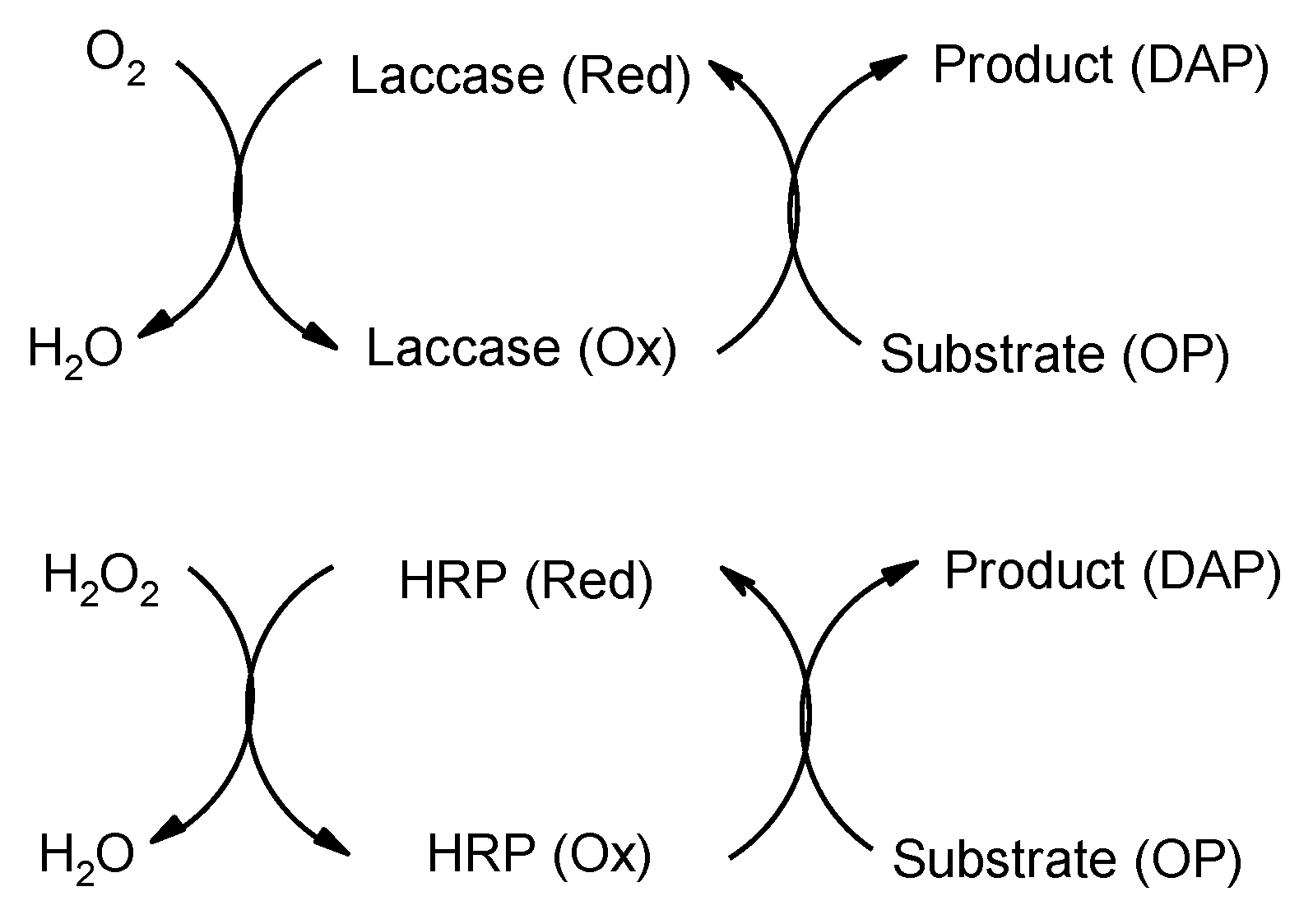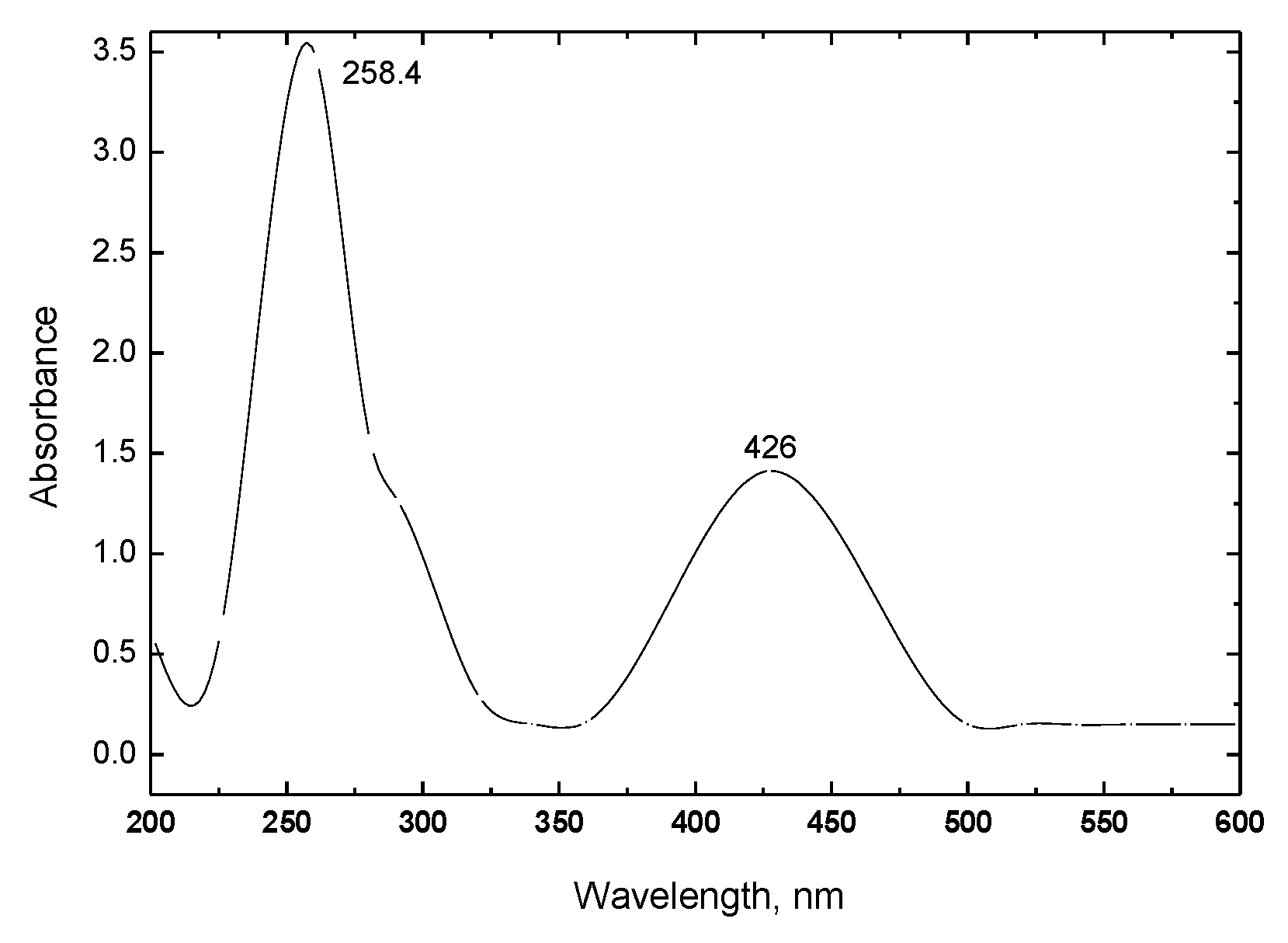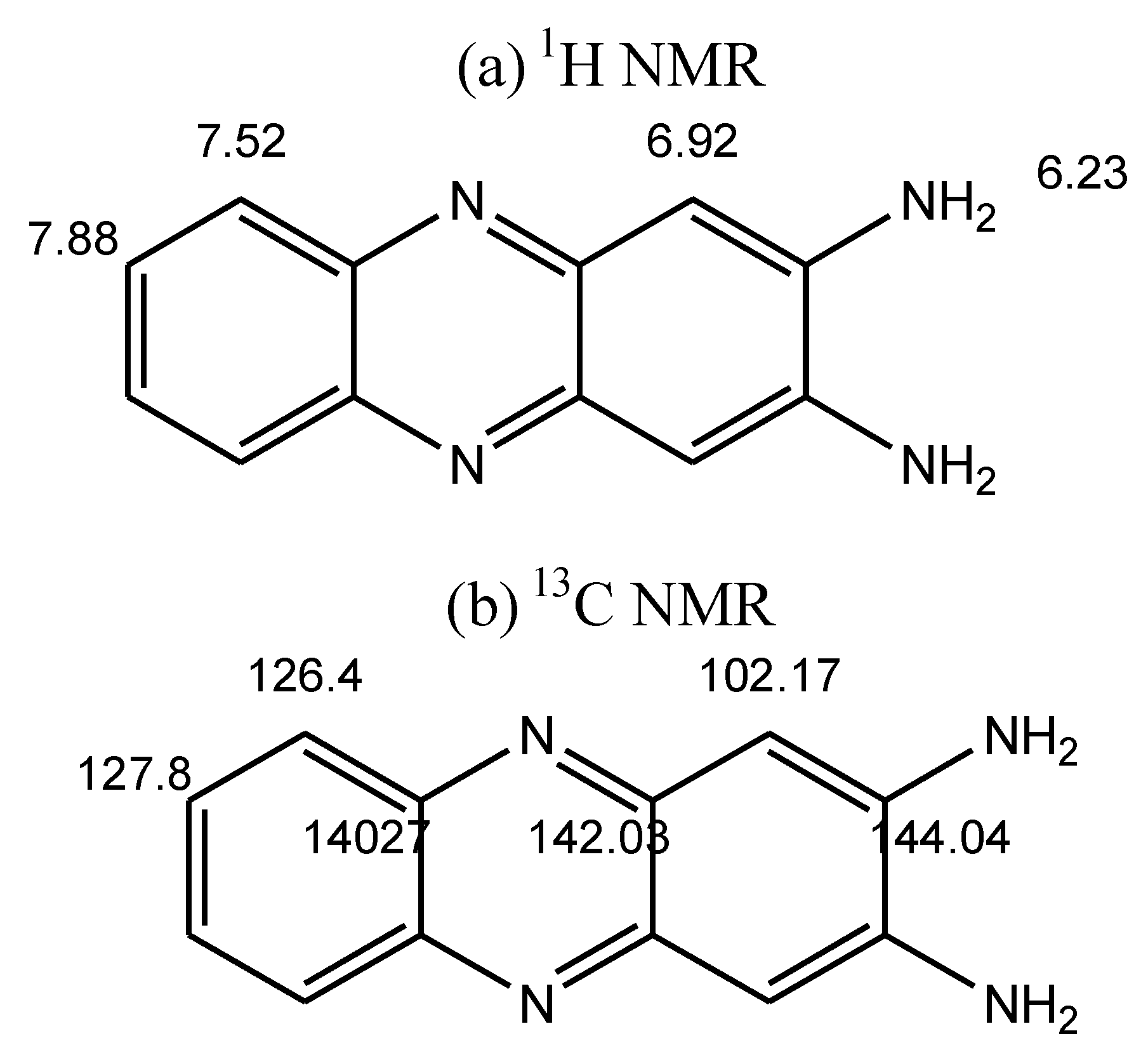2,3-Diaminophenazine
Abstract
:1. Introduction
2. Results and Discussion
3. Conclusions
Supplementary materials
Supplementary File 1Supplementary File 2Supplementary File 3Acknowledgements
References and Notes
- Piro, B.; Zhang, Q.D.; Reisberg, S.; Noel, V.; Dang, L.A.; Duc, H.T.; Pham, M.C. Direct and rapid electrochemical immunosensing system based on a conducting polymer. Talanta 2010, 82, 608–612. [Google Scholar] [CrossRef] [PubMed]
- Mekler, V.M.; Bystryak, S.M. Application of o-phenylenediamine as a fluorogenic substrate in peroxidase-mediated enzyme-linked immunosorbent assay. Anal. Chim. Acta 1992, 264, 359–363. [Google Scholar] [CrossRef]
- Domínguez de María, P.; Alcántara, A.R.; Carballeira, J.D.; De la Casa, R.M.; García-Burgos, C.A.; Hernáiz, M.J.; Sánchez-Montero, J.V.; Sinisterra, J.V. Candida rugosa lipase: A traditional and complex biocatalyst. Curr. Org. Chem. 2006, 10, 1053–1066. [Google Scholar] [CrossRef]
- Tarcha, P.J.; Chu, V.P.; Whittern, D. 2,3-diaminophenazine is the product from the horseradish peroxidase-catalyzed oxidation of o-phenylenediamine. Anal. Biochem. 1987, 165, 230–233. [Google Scholar] [CrossRef]
- Solomon, E.I.; Sundaram, U.M.; Machonkin, T.E. Multicopper oxidases and oxygenases. Chem. Rev. 1996, 9, 2563–2605. [Google Scholar] [CrossRef]
- Leutbecher, H.; Constantin, M.A.; Mika, S.; Conrad, J.; Beifuss, U. A new Laccase-catalyzed domino process and its application to the efficient synthesis of 2-aryl-1H-benzimidazoles. Tetrahedron Lett. 2011, 52, 604–607. [Google Scholar] [CrossRef]
- Bourbonnais, R.; Paice, M.G. Oxidation of non-phenolic substrates: An expanded role for laccase in lignin biodegradation. FEBS Lett. 1990, 267, 99–102. [Google Scholar] [CrossRef]
- Fornera, S.; Walde, P. Spectrophotometric quantification of horseradish peroxidase with o-phenylenediamine. Anal. Biochem. 2010, 407, 293–295. [Google Scholar] [CrossRef] [PubMed]
- Jiang, Y.L.; Feng, C.L. The study on reaction kinetics based on a new system of the horseradish peroxidase catalyting the oxidation of o-phenylenediamine by H2O2. Spectrosc. Spectr. Anal. 2002, 22, 436–440. [Google Scholar]
- Hempen, C.; Van Leeuwen, S.M.; Luftmann, H.; Karst, U. Liquid chromatographic/mass spectrometric investigation on the reaction products in the peroxidase-catalyzed oxidation of o-phenylenediamine by hydrogen peroxide. Anal. Bioanal. Chem. 2005, 382, 234–238. [Google Scholar] [CrossRef] [PubMed]





© 2011 by the authors; licensee MDPI, Basel, Switzerland. This article is an open access article distributed under the terms and conditions of the Creative Commons Attribution license (http://creativecommons.org/licenses/by/3.0/).
Share and Cite
Zhou, P.; Liu, H.; Chen, S.; Lucia, L.; Zhan, H.; Fu, S. 2,3-Diaminophenazine. Molbank 2011, 2011, M730. https://doi.org/10.3390/M730
Zhou P, Liu H, Chen S, Lucia L, Zhan H, Fu S. 2,3-Diaminophenazine. Molbank. 2011; 2011(3):M730. https://doi.org/10.3390/M730
Chicago/Turabian StyleZhou, Pandeng, Hao Liu, Shicheng Chen, Lucian Lucia, Huaiyu Zhan, and Shiyu Fu. 2011. "2,3-Diaminophenazine" Molbank 2011, no. 3: M730. https://doi.org/10.3390/M730
APA StyleZhou, P., Liu, H., Chen, S., Lucia, L., Zhan, H., & Fu, S. (2011). 2,3-Diaminophenazine. Molbank, 2011(3), M730. https://doi.org/10.3390/M730




